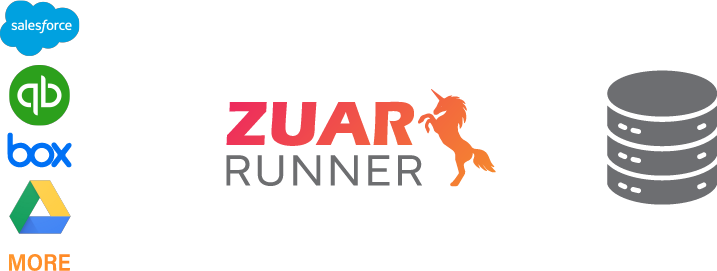Exploring the Data Value Chain
See how companies create value with data, better understand the data lifecycle, and learn how to implement the data value chain.

Creating Value With Data
Over the past several decades, the efficacy of data-driven decisions has had a tremendous impact on business development. Executives and product leaders have realized data can be a source of value— quality data and analysis can improve operational efficiency, identify areas of expansion, and validate business hypotheses. Today, many businesses commit a tremendous amount of resources to the collection and analysis of data. According to Randy Bean, Founder and CEO of NewVantage Partners and Author of Fail Fast, Learn Faster:
The process of extracting value from data is not an easy one—a number of problems exist, including data discovery, curation, cleanliness, regulation, and modeling. In order to establish effective data ecosystems within an organization, it’s necessary to overcome challenges like:
- Understanding the value and application of data.
- Determining how to monetize or extract value from data.
- Executing a business model that supports data-driven operation.
- Enabling employees, partners, and external organizations to easily access data.
- Preservation of privacy and security for all parties.
Given recent advancements in data processing, a data-driven business is table stakes. True competitors will optimize their data, carefully planning and executing a data lifecycle that extracts maximum value and improves organizational efficiency. An understanding of data’s lifecycle and how it can add value (aka the Data Value Chain) is essential to an effective implementation and maximal value creation.

Defining The Data Lifecycle
The Data Value Chain describes the lifecycle of data within an organization, from collection to analysis and dissemination. While the value chain can be applied to all types of data processes, we’ll focus on the value chain within organizations and product teams. There are five common steps that characterize the data lifecycle:
- Acquisition: The first step to extracting value from data is recording and/or capturing data from both internal and external sources. Data acquisition decisions are crucial, as they impact the other parts of the data lifecycle.
- Processing: Acquired data is rarely standardized or ready for analysis. Data processing is necessary to transform the data into a usable format. As the old maxim goes, “garbage in, garbage out.” Data-derived value requires first acquiring quality data then refining it to meet stakeholder specifications.
- Storage and Enrichment: Next is the process of storing data from multiple sources to form a cohesive dataset. In this step, metadata is added to improve discoverability and democratization.
- Analysis: Data is only useful if it contributes to new learnings. Analysis is using acquired data to generate insights and aid in decision-making. This step generates charts, dashboards, and reports that the business can leverage to drive increased value.
- Exchange: The final step is applying outputs in a business context, whether optimizing internal operations or identifying new revenue streams.
Of course, there are other components of the Data Value Chain that function as overarching traits, but are nonetheless crucial to extracting organizational value from data. They include:
- Literacy: Proper understanding of analysis and statistics is necessary to take action and glean insight from data. Data literacy also means recognizing the limitations and scope of the improvements that data can provide.
- Democratization: For maximal value, data must be accessible to all members of an organization. Ensuring insights are appropriately shared is a common challenge. Metadata tracking and reporting are two common areas of focus.
Understanding each step of the Data Value Chain is essential to creating a data-driven culture, and effectively using data to create business value for your organization.

Implementation
The task of building an end-to-end process to curate data and ultimately extract value is a daunting one. It involves deploying pipelines and scripts to capture and clean data, building a reporting infrastructure with simplified and consistent views, then pulling in BI and product analytics to parse and disseminate data to stakeholders. Pipeline failures, oversight, and technical debt can all impose costly repairs and resource-intensive work. Thankfully, advancements in tooling and data infrastructure over the past decade have drastically reduced the complexity of implementing effective data modeling within an organization.
A heavily staffed team of data engineers, scientists, and analysts maintaining a complex, bespoke data pipeline is no longer necessary (or even recommended). Today, many off-the-shelf products can be integrated to reduce the operational overhead of data acquisition, transformation, and storage.
Thus, the data org can operate more nimbly and lean—the focus of data engineers and analytics engineers, a relatively new title, can be to operate and maintain tooling, building out custom solutions only when absolutely necessary.
With improvements in BI, analysts can focus less on set-up and SQL, and more on delivering standardized reporting and performing exploratory analysis. Self-service analytics tools allow anyone, regardless of SQL or BI knowledge, to extract value from data, assuming a baseline data literacy.

Zuar & the Data Value Chain
Consulting with data experts can reduce the time necessary to establish data processes and help organizations arrive at data-driven insights faster, often while avoiding common mistakes that impose costly technical debt. With so many decisions to make, speaking with an expert is a worthwhile investment when defining your data lifecycle.
Zuar provides assistance in the follow areas:
- Acquisition: One of the most resource-intensive steps to extracting value from data, Zuar’s existing connectors help to pull data from sources like Salesforce, HubSpot, QuickBooks, and others to make acquisition a breeze.
- Processing: Once acquired, Zuar can assist in establishing automated processes to clean data and mutate it into consistent, usable formats.
- Storage & Enrichment: Zuar’s enhancement techniques add contextual information (metadata) and centralize data. Additionally, Zuar has experience with many on-prem and cloud-based storage options.
- Analysis: Zuar was founded as an analytics services company—analysis is in our DNA. Zuar provides analytics consulting around every step of the journey, from dashboard creation to staff training.

Our services free up time and resources to be spent on how to best extract value from data rather than the process of extracting it. According to Zuar Cofounder and Principal Joel Stellner:
With our services, businesses can dedicate more time and energy to making the right decisions.
However, the “right decision” is often the most difficult thing to realize. Luckily, Zuar offers comprehensive strategy and planning services. What architecture should you use? What solution providers are required for implementation? What methods will be most effective to meet our business goals?
From start to finish, Zuar’s services and tooling align with the Data Value Chain, meaning you can trust us as a one-stop-shop for all of your data needs. Reach out today to discuss your data options, strategy, and goals!



